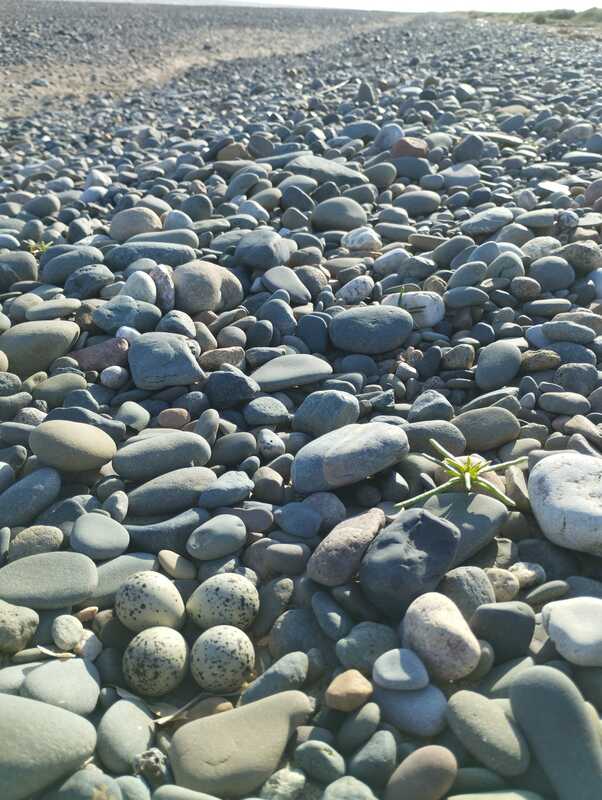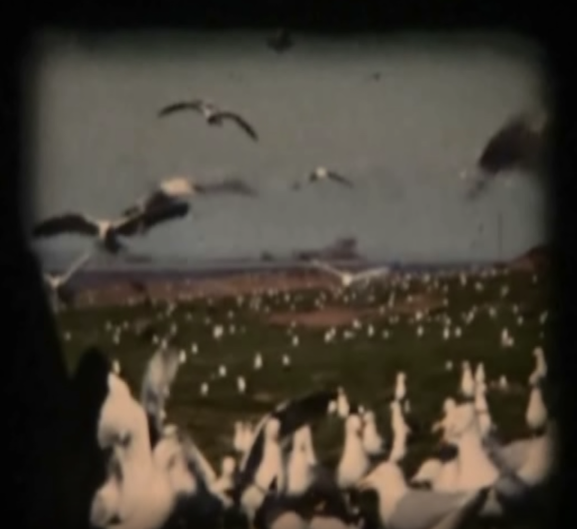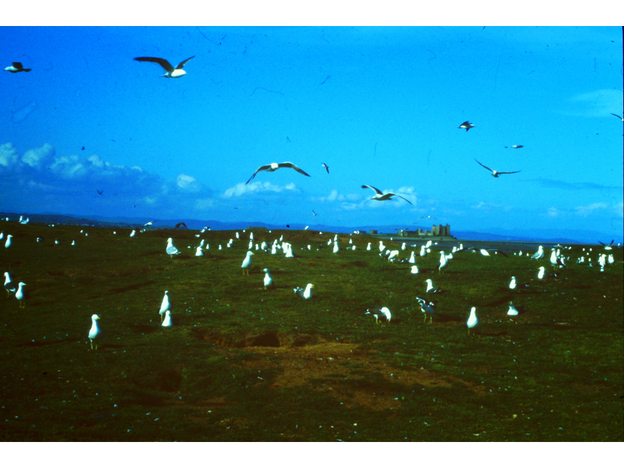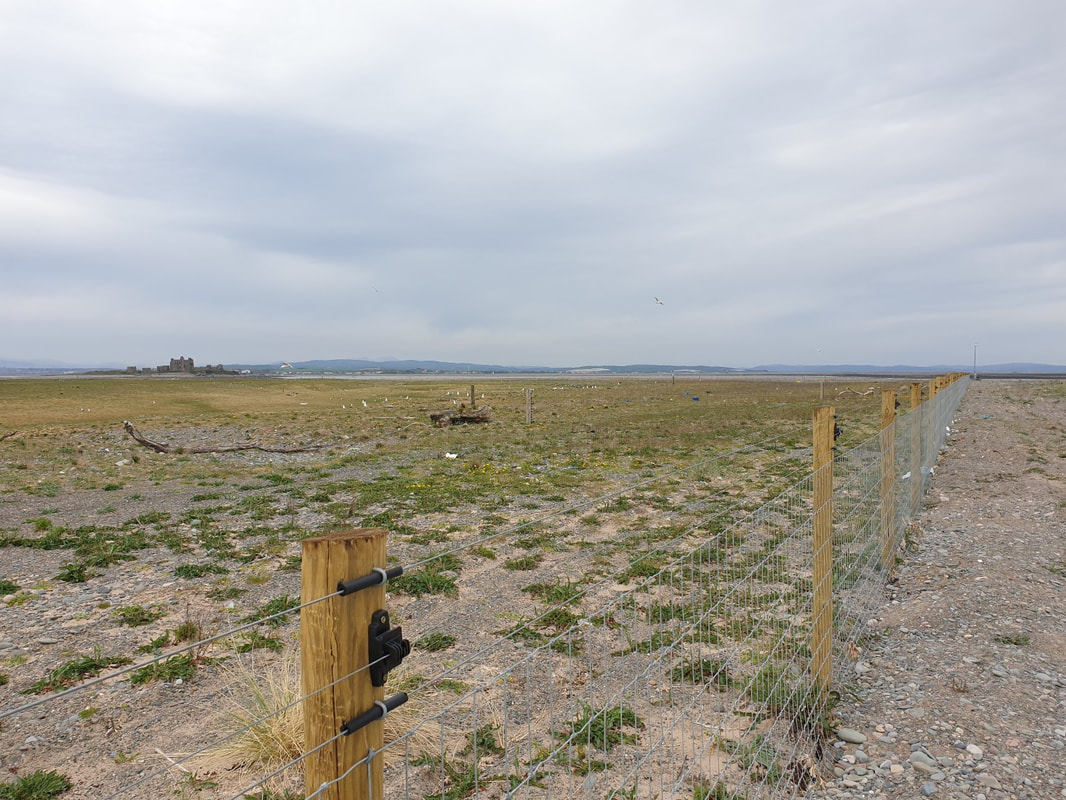|
Happy World Seabird Day! July 3rd is the annual World Seabird Day, chosen to mark the last recorded sighting of the now-extinct Great Auk in 1844. We've marked today with a blog about the seabirds and waders at South Walney Nature Reserve by Rebekah Watts, Shorebird Warden, Cumbria Wildlife Trust The Reserve South Walney Nature Reserve is a coastal reserve which has been managed by Cumbria Wildlife Trust since 1963. Located at the Southern end of Walney Island, South Walney Nature Reserve is comprised of a variety of habitats such as dunes, saltmarsh and shingle. This combination of habitats makes South Walney a very appealing location to a wide variety of birds and other wildlife. South Walney is a site of special scientific interest (SSSI) and a special protection area (SPA). The birds and disturbance Many bird species reside at South Walney Nature Reserve and throughout the year this reserve is home to species such as ringed plover, oystercatcher and eider. Black tailed godwit, dunlin and knot are examples of wintering species and through the spring and summer, species such as wheatear and little tern spend their time here. During the breeding season, March through to August, many species breed at South Walney including the UK’s second rarest seabird; the little tern. There is no beach access and dogs are not permitted. These restrictions immensely reduce the stress to nesting birds, allowing them to raise their chicks. Livestock grazing and the wild population of rabbits ensure that the habitat is in perfect condition for nesting birds such as great black back gulls and lapwing, who choose short grass when nesting, allowing them to observe predators from their position. The largest gull colony in Europe, comprised of herring and lesser black backed gulls, used to reside at South Walney Nature Reserve, with numbers in excess of 45,000. Due to predation these numbers dropped dramatically, to around 400 pairs. The installation of a predator proof fence has allowed these numbers to begin recovering. Last breeding season, 2023, the total colony number was 1630 pairs and it continues to rise. The ground nesting birds that choose Walney as their nesting grounds are in decline. Despite the apparently large amount if herring and lesser black-backed gulls seen in towns, their numbers are falling. Lesser black-backed gulls are amber listed and herring gulls are in even poorer numbers and are a red listed species of concern. Little terns are also amber listed as well as being a schedule one protected species. Ground nesting birds are easily disturbed. The separation from their eggs and chicks can result in predation from other species such as crows and foxes, and eggs can be cooled. Energy loss can be fatal to a bird, using up energy stored for hunting for food. Repeated disturbance results in adults abandoning chicks and eggs due to stress. Other Wildlife The benefit of these restrictions is not limited to birds. South Walney Nature Reserve is home to a thriving grey seal colony. Cumbria Wildlife Trust’s marine team conduct surveys on these seals during their breeding season, and counted 409 individuals on their last count. The lack of beach access allows the seals to haul out and moult, breed and digest their food without interference. Other mammals such as otters, foxes, stoats and badgers also call this reserve home. Marine wildlife can also be seen when sea watching at South Walney Nature reserve, including bottlenose dolphins, harbour porpoises and recently, a basking shark! So why is Walney important! The combination of habitats at South Walney Nature Reserve allows many ground nesting species with different requirements to nest and here successfully. For example, grazed pasture and saltmarsh allows lapwing to nest and to provide their chicks with the correct diet, teaching them to feed on invertebrates in muddy margins. Another example is little tern, who create their nest in sand and shingle, fishing for sand eels in the sea. When given respect and space, ground nesting birds can succeed enormously and that is why it is so important to offer these amazing birds a safe place to lay their eggs and raise their chicks free from disturbance. South Walney Nature Reserve is able to provide this environment and with the public, volunteers and staff with the same vision, wildlife is able to thrive. Link to Bekka's other South Walney blog
First blog: LIFE at South Walney Second blog: Nesting Season Preparation Photo credits: Rebekah Watts
0 Comments
Blog by Rebekah Watts, Shorebird Warden - South Walney, Cumbria Wildlife Trust Nesting Season Spring has finally arrived and with it, changes are occurring. Flowers are blossoming, days are lengthening and here at South Walney Nature Reserve, birds are carrying sticks and feathers and nests are popping up along our beaches which means that nesting season has begun. Nesting season is the most important time of year. The productivity of our birds is highly important and to assist them during this season, a lot of preparation is undergone during the Autumn and Winter months. Nesting Season Preparations Funding provided by ‘LIFE on the Edge’ (also known as LOTE) helps substantially at South Walney nature reserve when it comes to nesting season. LOTE is a Life Nature project which is lead by the RSPB and National Trust. This project aims to improve the quality of target coastal areas as well as providing recommendations for longer term coastal habitat management and/or creation, with focus on little tern, oystercatcher and ringed plover. LOTE have provided South Walney with equipment for electric fences such as solar panels and energisers, monitoring equipment such as trail cameras and thermal scopes and permanent hybrid fencing. LOTE also provides funding for a seasonal shorebird warden to work with the sole purpose of protecting coastal nesting birds. With the help of LOTE, we at South Walney are able to provide protection to nesting coastal birds throughout the season. Preparation for nesting season begins in late August / early September. At this time, we start checking our permanent fences for damage and repairing them. Debris is removed and the gates are shut to stop livestock from entering. Holes in the fence are repaired, wire is replaced and holes dug by predators into the fenced area are filled in. The area around the electric fence is cut back with a brush cutter to reduce interference with the wires. The inside of the fence is also brush cut to create the correct nesting habitat. The fence is now ready to be made live closer to the start of the season. During the nesting season, temporary electric fences and signs explaining what we are protecting are erected. Before this, the area around the perimeter of the fence is brush cut and litter picks are completed. During this season and the previous season, an area of land to past the boundary wall of the reserve to the north was fenced. This land was kindly temporarily loaned to South Walney Nature Reserve, as little terns choose this location to nest. The habitat is shingle and sand, close to the sea which is a perfect location for terns to nest and fish. To provide more habitat for nesting coastal birds, a tern raft is moved into place, floating in the pool of the oyster farm. The anchors are dropped, a camera is installed and the raft is ready for occupants. There is a permanently placed raft which is used by the same Oystercatcher pair each year. The parents are currently sitting on eggs there now! Chick shelters, nest cages and cameras are important to protect vulnerable chicks and adults from predators and extreme weather. Shelters of different shapes (for different chicks) are placed on the tern rafts, inside the fences and along the beaches to provide shelter and safety to chicks. Cameras are crucial for monitoring wildlife. They are placed directly on nests and at crossing points to catch predators. Cameras are placed out early in the season and checked regularly throughout the season. New to 2024 A new sound lure and hand-crafted little tern and herring gull decoys were created in 2024. In an attempt to attract a mixed gull colony of herring and lesser black backed gulls to nest in a new location, 10 adult and 6 juvenile herring gull decoys were created and placed in a temporary 8 strand fenced area. This fence was put in place at the start of the season with decoys and a trail camera, and has successfully attracted first year herring gull visitors since the addition of the decoy birds. We hope to see these gulls return next nesting season! To attract little tern, 40 little tern decoys were crafted and placed on the tern raft, in the temporary 12 strand fence to the north of the reserve and in the fenced area on Foulney island nature reserve. In combination with the decoys, a sound lure was created and is played on loop in the daylight hours. This has successfully attracted 12 pairs of little terns and we are hoping to see chicks in the next couple of weeks. Good Luck, Birds! Now that fences are live, decoys and sound lures are in place and cameras are being regularly checked, it’s up to the birds to raise their young. We wish them the best! Link to first South Walney blog by Bekka: LIFE at South Walney Photo credits: Rebekah Watts Blog by Rebekah Watts, Shorebird Warden - South Walney, Cumbria Wildlife Trust Hi! I’m Bekka, and I’m this year’s shorebird warden at South Walney Nature Reserve for the 2024 nesting season. I am a residential warden. This amazing and diverse reserve is teeming with wildlife including many bird species, and that is what I am here to protect. As a shorebird warden it is my job to protect and observe my target species: little tern, oystercatcher, ringed plover, great black backed gull, lesser black backed gull, herring gull and lapwing. What wildlife can be seen at South Walney Nature Reserve? Walney is home to a large, thriving grey seal colony, with more than 400 individuals. Pupping season starts in September, and watching the little white pups laying on the beach under the watchful eyes of their protective mothers is always a treat. Our amazing mammals include otters, badgers, foxes and stoats. These mammals are rare and exciting to spot here! Sea watching from out sea hide can yield even rarer sights; including bottlenose dolphins, harbour porpoises and recently, a basking shark! South Walney Nature Reserve is home to many incredible species of birds, including wildfowl, wading birds and passerines. How does a shorebird warden protect shorebirds? I monitor my target species by completing shorebird surveys, low tide nest counts and trail camera surveillance. The wonderful team of volunteers and I maintain the electric fences which protect the gull and tern colonies from predators such as foxes and badgers. When eggs are found I take into account the incubation period and use this to calculate hatch dates. I place cages around nests which are outside the fence and then I wait! When eggs hatch, I revisit the site of the scrapes (nests) and watch for signs of life such as parents carrying food for their chicks or a view of the chicks themselves. All of this helps me to work out the productivity of each species in this area. Visitor engagement is also an important part of my job. I explain the issues of disturbance of both birds and seals, teaching people how to reduce disturbance and to share outdoor coastal spaces with wildlife in positive way, such as moving away from a distressed bird, staying 100m away from hauled out seals and not forcing wildlife interactions. When ground nesting birds feel threatened, they may abandon their eggs or chicks, or may perform a distraction display, which expends a lot of energy which the bird has stored to find food. All of these responses leave chicks and eggs vulnerable to predation. Working together we can protect these vulnerable species and give them the best chance at a successful nesting season. An example of a monitoring week 2024 season up to June Passerines, perching birds (up to now) in 2024 Although these species aren’t on my target list, I am still monitoring their success. The table below shows the species which have been successful in the 2024 nesting season so far: Shorebirds (up to now) in 2024 Fox predation has been an issue this nesting season and due to this there are less nests than in the previous season, however our fences are providing protection to many of the species listed below: Wildfowl (up to now) in 2024 As with the passerine birds, wildfowl aren’t on my target list, however I am still monitoring them:
Good luck, everyone! The season is progressing, chicks are beginning to hatch and I will continue to monitor these special birds until the outcome of the last chick is known. South Walney is a truly dynamic reserve with so many exciting species and being able to assist them during this crucial time is an amazing experience. I hope for a successful nesting season. My name is Jessie, and I’m this year’s seasonal warden at Cumbria Wildlife Trust’s South Walney Nature Reserve. South Walney is a beautiful reserve that I feel very lucky to be calling home this summer, and it’s a home I share with a lot of amazing wildlife. Whether it’s intently scanning our shingle beaches for the nests of ringed plover or oystercatcher, counting the hundreds of eider duck that roost here at high tide or chatting to visitors, there’s plenty to keep me busy here. I’m employed by Cumbria Wildlife Trust, but my job is a part of the Life On The Edge (LOTE) project, an EU funded project lead by the RPSB. LOTE is dedicated to understanding, monitoring and improving the quality of coastal habitats, with a particular focus on oystercatcher, ringed plover and little tern. Engaging with visitors and reducing the impact of visitor disturbance on nesting birds is one of the most important parts of this, which can include keeping people away from the most important nesting areas and strict rules on dogs. All of our breeding shorebirds are very vulnerable to disturbance, as although their incredibly camouflaged nests provide excellent protection from predators it also means that people don’t notice them and can very easily step on them. Sadly, dogs are also a threat – even the most well-behaved dog will be seen as a predator by a nesting bird, and repeated encounters with dogs can cause birds to abandon their nest. In the worst cases, out of control dogs can actually attack or even kill wild birds, although this is rare. All breeding birds are protected under UK law, so we all have a duty to do our bit to protect them where we can! Here at South Walney we don’t allow any dogs (except assistance dogs) and there is no public access to the beach, and this goes a long way to protecting the beautiful wildlife that calls this place home. The best part of my job has to be nest surveying. I have to scan far ahead of me on the beach for any signs of nesting or territorial birds, and be incredibly careful where I walk to avoid stepping on the very thing I’m looking for – eggs perfectly disguised as pebbles. These may be the eggs of oystercatcher – unmistakable with their black and white plumage and vivid orange bills – or of ringed plover – looking a little like a forgotten member of the Incredibles with their distinctive black mask. Nest finding requires patience, a keen eye and keeping on constant alert for the slightest movement or the faintest alarm call from a nearby ringed plover. Although I have to say oystercatcher alarm calls are never exactly faint, and often I find myself being shouted at by an oystercatcher 200m away that I hadn’t even noticed yet! In the last week I have been lucky enough to find 3 little tern nests. Little terns are the UK’s smallest breeding tern, with a bright yellow bill and a very distinctive chirping call. Like many seabirds, they migrate from Africa to Europe every spring to breed, and will return there again in the autumn. I’m very excited to have them breeding here at South Walney and will be crossing my fingers for a successful breeding season! Stay posted for regular updates from me and if you’re visiting you may see me out and about – come and say hi! Guest Blog by Sarah Dalrymple South Walney Manager & Reserves Officer, Cumbria Wildlife Trust The gull colony at South Walney is an incredible one, and its fortunes over the years mirror strongly that experienced by the UK’s two commonest gulls, the herring and lesser black-backed gulls. Although a few gulls nested in the early 1900s, the numbers were steadily increasing. With the South end of Walney Island established as a Nature Reserve in 1963, regular and reliable counts were undertaken, and by 1974 an incredible 41,366 pairs of gulls – 22,751 herring and 18,615 lesser black-backed – were counted, making this largest colony in Europe at this time. Speaking to older birders who remember the height of the colony, a daily job at this time was to walk the tide line at low tide and collect the corpses of hundreds of gulls that had died from botulism over the previous day. The main food source for the colony was presumed to be a landfill 2.5km up the road from the colony; as this reduced in scale over the years until complete closure in the 1980s, the colony size declined accordingly. Remaining stable at about 10,000 pairs for a few years, the colony then started to suffer from mammalian ground predators. Remarkably, as Walney is only separated from the mainland by a narrow channel, foxes were not present on the south end of the island until the 1990s, and badgers not established until the late 2000’s. In 2011 Cumbria Wildlife Trust trialled temporary electric fencing of a part of the colony, which saw a notable success in fledging compared to the rest of the colony. Two large areas of the remaining colony were fenced – The Spit, a shingle area at the very southern edge of the reserve, and Gull Meadow, an area of semi-fixed dune on the western shoreline of the reserve. Although initially successful, a new problem arose in the mid 2010s. Year on year, several thousand pairs were fledging zero chicks. The most harrowing was in 2017, as we found a busy colony full of gulls and their young was carpeted with dead chicks only a week and a half later. This scene was repeated the following year. Necropsies were carried out by the Animal & Plant Health Agency, and it was identified that most chicks had been killed not by predators, but with “peck” marks. It was highly likely that the gulls were, in fact, killing their own young, or the young of their neighbours, and then not eaten – just left where they were. This is not an unknown phenomenon, as we’d seen this at Rockcliffe Marsh gullery, another site managed by Cumbria Wildlife Trust, and it has been seen at Gulleries in Texel, the Netherlands – although not to the same extent. We think that this intra-species predation is caused by the gulls experiencing extreme stress, loss of a food source plus predation pressure plus disturbance all adding up to cause the gulls to kill either their own or their neighbour’s young. By removing predation and disturbance from the Rockcliffe Colony, we managed to stabilise it after several years of zero productivity, and it is now a recovering colony successfully fledging young each year. At South Walney, a landfill just over the bay had closed in 2016, GPS tracking from a BTO project suggested our gulls had been feeding there; this closure led to a huge food source loss. And our electric fence was only mostly keeping the predators out; badgers and foxes were still sometimes getting through, but in 2020 badgers not only happily pushed through the fence, they dug a temporary sett right in the middle of the colony! By this point South Walney had dropped to under 1,000 pairs. Clearly something drastic was required to save it, and at least by removing any risk of predation we’d give the gulls the best chance we could. So thanks to our funders, this winter we erected a permanent fence, nearly 2m high, topped with electric, and with a horizontal “skirt” extending out underground 50cm to prevent any digging underneath. We enclosed almost the entirety of the Spit with this fence, double the area of the original electric fence. The eggs have started to hatch, and our counts reveal a new record low of just under 500 pairs. Will the new fence be enough to save the gull colony? |
Archives
April 2024
Categories
All
Photo credits: Oystercatcher by Katie Nethercoat (rspb-images.com)
LOTE Logo credits: Saskia Wischnewski |











































